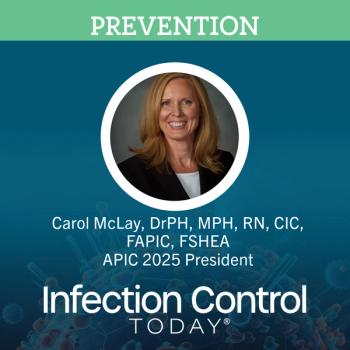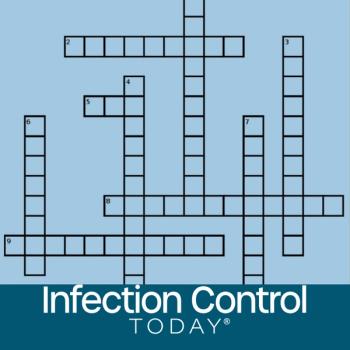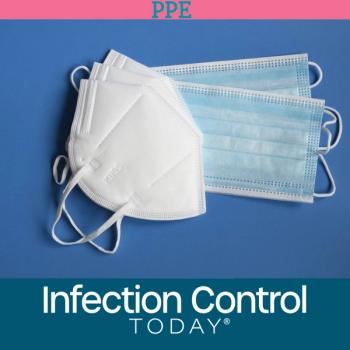
Strengthening the Future of IPC: What New Infection Preventionists Need—From People Who’ve Been There
Infection prevention’s future will be won with mentorship, soft skills, and honest collaboration—not just guidelines. In a candid roundtable, veteran IPs shared how to steady first-year practitioners: pair them with real mentors, teach time management and tough conversations, and build cultures that value “let me confirm” over guesswork.
“Infection prevention is an amazing profession,” said Lerenza L. Howard, DHSc, MHA, CIC, LSSGB, manager of infection prevention and quality improvement at a La Rabida Children’s Hospital in Chicago. “It develops your leadership skills—even without the official title.”
Howard was one of 7 voices in a wide-ranging roundtable on how to support new
Why the First Year Is So Hard
Howard began where many IP careers have started in recent years: amid crisis. “I was thrust into the profession during the
Garrett Hollembeak, CRCST, CIS, CHL, CIC, system infection preventionist for medical device re
In postacute care, the leap can be more abrupt. Joi A. McMillon, MBA HA, BSN, CRRN, WCC, CIC, CJCP, HACP-CMS, AL-CIP, the CEO of JAB Infection Control Experts, described clinicians “pulled straight from the floor… with zero IP knowledge,” suddenly responsible for a program “starting that moment.” Without transition support, “they’re sitting there floundering,” she said, warning that patients can suffer when a novice is left to “just try to get through.”
Beyond the knowledge gap, there’s an underdiscussed emotional load. Brenna Doran, PhD, MA, ACC, CIC, AL-CIP, founder and CEO of Innovative Partner Solution and a researcher on IP retention and burnout, sees it often: “Imposter syndrome, guilt, shame, uncertainty… How do we support new IPs? Give them grace. What they’re experiencing is not unique.” Just as important, she said, is coaching in communication: “You could literally go from talking to EVS [
The Culture and Coaching New IPs Need
ICT contributing editor Carole W. Kamangu, MPH, RN, CIC, the CEO, founder and principal infection prevention strategist for Dumontel Healthcare Consulting, has mentored many first-year IPs and remembers her own shaky start. “My first 6 months… I was contemplating quitting every single day,” she admitted. Even with structured onboarding, she finds “they really need someone to hold their hand… In infection prevention programs, there’s so much to do—no one has time to hold your hand. So, you have to become independent really fast.” Working with an external mentor group, she said, “within 3 months, you see a transformation.”
The moderator underscored the imperative of humility for safety. “Your students are always going to be happier if you say, ‘I’ll get back to you,’ than to give the wrong answer,” she said. “In your positions, if you give the wrong answer, it could really have devastating consequences.”
Nathaniel Napolitano, MPH, the CEO of Nereus Health Consulting and a health care epidemiologist for Harborview Medical Center in Seattle, Washington, added that simply learning how a facility works can take a year or more. He urged IPs to lead with empathy and partnership: “Not making it seem like infection control is a barrier… but being able to assist people with their workflows and then gaining their trust.” From the outset, he tells teams: “We’re there for safety above all else, and we’re there to help and supplement their work.”
Missy Travis, MSN, RN, CIC, FAPIC, a consultant for IP&C Consulting, and former nurse, spotlighted a mundane but make-or-break skill: time management. “My first day as an IP… I come into an office and it’s like, ‘What do I do?’” she said. New IPs juggle new knowledge, new relationships, and undefined days. Her coaching phrase—useful at any tenure—is simple: “Let me confirm that.” Guidelines change; the stakes are high. “I don’t know everything,” she said. “I want to make sure nothing has changed before I tell you an answer.”
From Police to Partner: Reframing IP’s Role
Early trust-building changes how colleagues perceive IP. “People tend to think of infection control as the police,” Napolitano noted. Framing the work around enabling safe workflows—and showing up with solutions, not just standards—helps dissolve that stereotype.
Brenna expanded that vision: “Our job is to take guidelines and best practices and marry them with what people do best—the frontline staff. We’re not there to function as a barrier; we’re there to function as a facilitator.” Using risk assessment and stakeholder input, she said, IPs can “find a middle ground that keeps patients safe and lets people do the work effectively.”
Howard found her own voice by being transparent during the pandemic’s rapid shifts. “There was ever-changing guidance,” she said. “You gain respect from your stakeholders by… being honest and genuine when sharing that you don’t know information.” The experience accelerated her growth. “The beauty was how swift I had to build my IP skills,” she reflected. Even working from a lab background—“the subbasement, the furthest from administration”—she now reports to executives in a matrix. “It really develops your leadership skills,” she said.
Building the On-Ramps: Practical Supports That Work
Panelists converged on several concrete supports organizations can stand up (or strengthen) now:
- Mentorship with real availability. Assign a named mentor who protects time weekly for the new IP’s questions, shadowing, and scenario-based coaching. “An experienced infection preventionist… can guide and navigate that new IP,” Howard said.
- Soft-skills curricula. Role-play “crucial conversations” with EVS, perioperative leaders, and the C-suite. Brenna coaches IPs to enter tough meetings “from a place of curiosity” and to use confidence-building phrases like “Let me look into it.”
- Time-management frameworks. Travis recommends structured daily/weekly cadences (surveillance blocks, rounding windows, project sprints) and clear escalation paths so new IPs don’t drown in ad-hoc requests.
- Realistic scope and executive messaging. Napolitano urged leaders to set expectations openly and position IP as an enabler, not an obstacle. “Gain their trust early on,” he said.
- Onboarding that goes beyond checklists. Kamangu emphasized pairing structured orientation with “handholding” where needed. That human connection flips confidence quickly.
- Safe language for uncertainty. The moderator and Travis modeled phrases that protect patients and credibility: Let me confirm, I’ll get back to you, Guidance changed last week—here’s the update.
For IPs entering from nontraditional routes—sterile processing, EVS, public health—the panel sees a strategic advantage. “Regardless of your background,” Doran said, “you bring something to the table that’s needed.” Hollembeak agreed: you start with the slice you know and build outward with the help of other IPs, Association for Professionals in Infection Control and Epidemiology (APIC) resources, and cross-departmental partners.
The Rewards Are Real
After naming the challenges, panelists were eager to stress why they stay. “I don’t want anyone listening to this thinking you should run for the hills,” Doran said. “It’s highly rewarding. You will have a team of support.” Kamangu echoed that aspiring IPs reach out to her often: “It’s great to discuss the challenges, but we should talk about the rewards.”
Howard’s list of rewards is long: multidisciplinary impact, leadership growth, and constant learning. “We work closely with executive leadership,” she said—far from that subbasement lab bench. “I really love what I do.”
A Blueprint for Leaders
Retention starts before day 1. Build a program that acknowledges the cognitive load, the emotional transition, and the identity shift new IPs face. Fund mentorship. Reward collaboration. Celebrate soft-skill wins. And teach what to say when you don’t know—because in a field where guidance evolves and stakes are high, credibility is a team’s most valuable tool.
As Napolitano put it, the job is about partnership for safety. As Travis said, success starts with a plan for the day. As McMillon said, postacute settings must invest in transition support to protect patients. As Hollembeak said, confidence grows by seeking help and learning fast. As Kamangu proved, mentorship shortens the runway. And as Howard said, a crisis can forge leaders.
Or, distilled into Doran’s refrain: “We're not there to function as a barrier. We're there to function as a facilitator. Through our lens, using risk assessment and again, leveraging our stakeholders, we get to find a middle ground that not only allows us to support patients and keep them safe, but also allows the people who do the work to do it in a way that is effective and successful for them.”
Newsletter
Stay prepared and protected with Infection Control Today's newsletter, delivering essential updates, best practices, and expert insights for infection preventionists.






